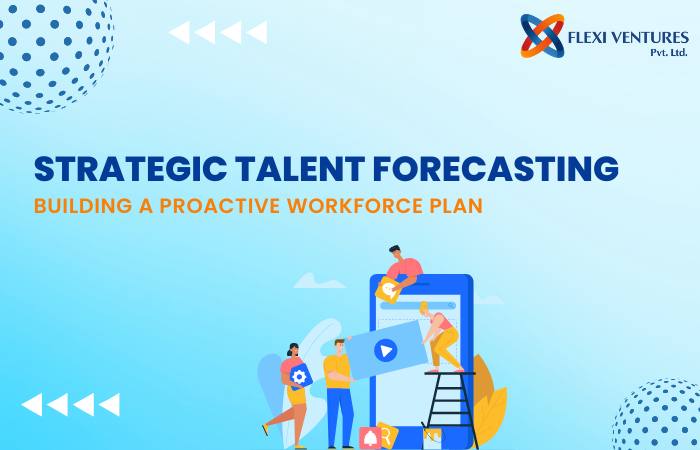The primary challenge numerous businesses face is relying on a reactive strategy for talent management and succession planning. In many cases, when a senior team member decides to depart, there is often no pre-existing plan to address this situation. Efforts to fill the knowledge gap are only initiated once the departure is officially announced. It is understandable why this reactive approach is common, as businesses are naturally hesitant to make predictions. However, when it comes to talent management, being reactive is insufficient. This approach exposes businesses to vulnerability precisely when stability is most crucial. The departure of a highly experienced worker, who possesses decades of knowledge and expertise unique to them, will undoubtedly create a significant void within the organization. This gap needs to be filled promptly and requires prior planning. You must prepare for such scenarios to ensure the growth of your business.
Every organization hopes that the talent they recruit and nurture will remain loyal and continue contributing their expertise indefinitely. However, the reality is that circumstances change. People switch careers, start families, relocate, or face health issues. Numerous unforeseen events could lead to gaps in your skilled workforce. Therefore, relying on a reactive approach to succession planning is a recipe for disaster. So, how can you avoid this predicament? Since you cannot foresee the future or control people’s decisions, how can you effectively manage your talent and establish a seamless succession process that minimizes the time needed to recover from a departure? The answer is not as convoluted as it may seem and an organization has to change its stance from being “Reactive” to “Proactive”.
The proactive approach:
Document what you can
It is a time-consuming task, and numerous organizations quickly become weary of keeping up with new updates. However, documenting procedures and processes is crucial. This is particularly significant if a specific individual or team oversees them. It is essential not only for permanent departures but also for any short-term absences that individuals may take. How many organizations face chaos when one of their employees calls in sick and no one else is aware of what needs to be done? This is a common situation, but one that can be easily prevented if things are properly documented and communicated. This strategy ensures that when you need to step in for a knowledgeable employee, there are resources available to help alleviate the pressure.
Know who you’ve got
To effectively manage their staff, an organization must have a clear understanding of the individuals within their existing workforce. Without this knowledge, it becomes impossible to identify potential candidates for employee replacements, leading to wasted time and resources in external searches. However, even in large organizations, this task can be accomplished with a collaborative effort between senior leaders, line managers, and HR. By actively mapping out the composition of the current workforce and recognizing their potential contributions to the succession plan, organizations can ensure a smooth transition and maximize internal talent.
Know where they are going
The pinnacle of effective team culture is that organizations need to have a culture of trust, openness, and collaboration to effectively manage their workforce and plan for future changes, such as retirements or employees transitioning to different roles or departments.
Encourage collaboration and knowledge-sharing
The conscious efforts towards being a flatter organization is the learning of the decades of studies of the various organizational structures and it rightly also helps to propagate collaboration and knowledge sharing. Flatter organizations actively acknowledge the fact that the distinction between departments and teams in a business can hinder effective talent management and succession planning and that encouraging collaboration and knowledge sharing between teams and departments is crucial for proactive succession planning. By allowing people to explore the wider business and discuss how they can help each other, suitable candidates within the team can be identified to step up and fill knowledge gaps.
Plan for where you want to be
To proactively manage your talent pipeline, it is crucial to base your plans on your desired future state rather than your current situation. Every business has aspirations for change, whether it’s introducing a new product, expanding globally, or targeting a different client base. Consequently, every organization should have an action plan and roadmap outlining how these changes will occur. In terms of talent management, your focus should be on aligning your efforts with this plan. While it is important to have individuals who understand the day-to-day operations of your current business, it is equally important to have individuals who can bridge the gap as you transition into your new area of focus. Suppose a highly experienced individual departs and leaves a knowledge gap, whether or not you have a replacement ready. In that case, it presents an ideal opportunity to drive changes that will propel your business toward your desired future state. Retaining the elements of day-to-day operations is undoubtedly important, but the void left by an individual does not necessarily need to be filled by a replica. Instead, seize the opportunity to progress toward your desired future state.
Talent management and succession planning are crucial for organizations due to the impending retirement of ‘baby boomer’ employees and the need to create a sustainable talent pool with millennials. To ensure success, businesses must shift from a reactive to a proactive approach.

